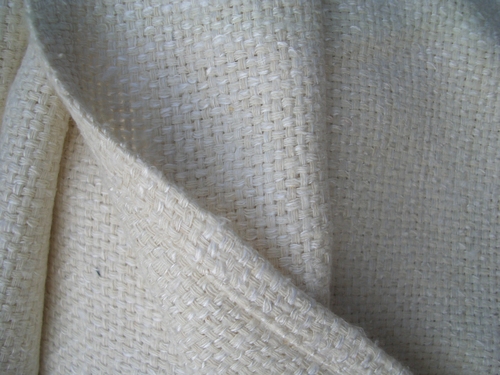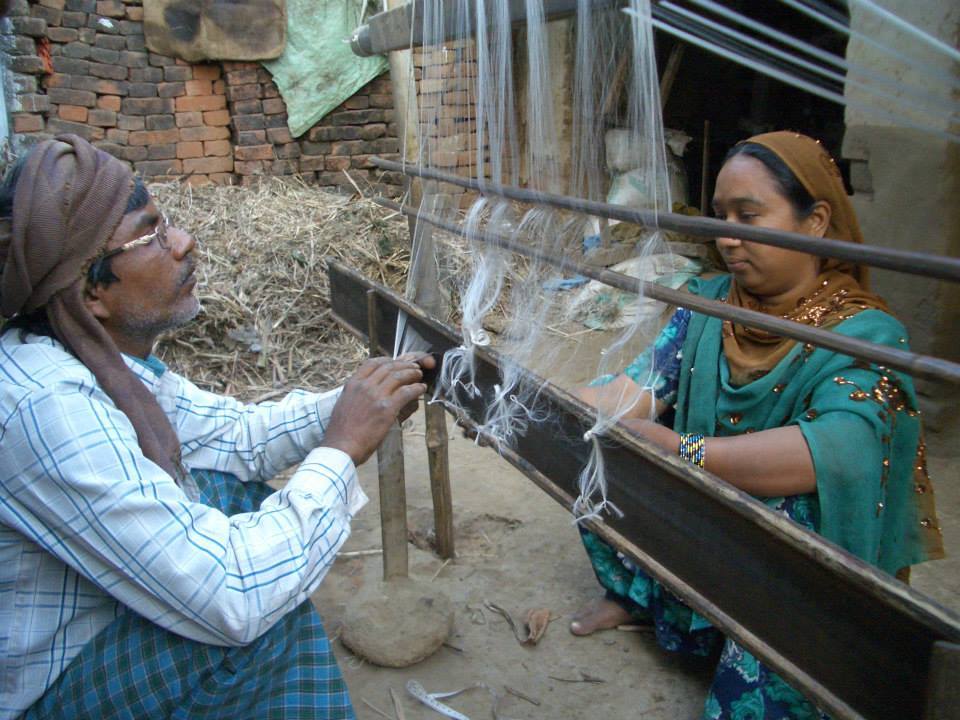MATKA SILK
Background: the problems with conventional silk
Silk is a natural fibre that comes from the cocoons of silk worms. The majority of these feed on the leaves of the mulberry tree and their silk is therefore known as mulberry silk. Silk cocoons are made up of one continuous thread - known as a filament - and it is the long length of this thread that accounts for silk’s smoothness and lustre. To ensure that this thread remains continuous, however, the silkworm has to be prevented from emerging from the cocoon, as this breaks the thread. This unfortunately means that the silkworm has to be killed while it is still inside the cocoon, and it is for this reason that silk cannot be classed as a ‘cruelty-free’ fibre.
Although silkworms are killed in the process of making silk, silk is a low-waste fibre and with the exception of China, where the industry is highly mechanised and chemically intensive, silk production does not involve heavy use of chemicals and is often made entirely by hand. Outside of China, it is usually produced in rural villages, where it provides an important source of income. It is also important to remember that no fibre produced on a mass scale is cruelty free. Plant fibres are usually farmed, which destroys habitat for wildlife, and.synthetic fibres come from petrochemicals (i.e. plastics) which have a devastating effect on aquatic species. In some ways, silk is one of the least cruel fibres, as the silkworm is really the only species to suffer, unlike with cotton or synthetics, where entire ecosytems can be damaged.
So, silk is far from being the worst fibre around, but it’s also far from perfect and better alternatives do exist. One of these is matka silk.
Matka: a better alternative
Matka is essentially upcycled silk, as it is made from the short threads that have broken away from the main filament and are therefore unsuitable for conventional silk production. To make matka silk, these short threads are spun into yarns that have a slightly uneven texture and less of a shine than conventional silk, as they are made up of several broken threads. This results in a unique fabric that has a slightly more matte appearance than conventional silk, although it shimmers very subtly when placed in sunlight. The spun nature of the threads means that they are slightly thicker than conventional silk, but still very soft, giving it a feel that is somewhere between cotton and cashmere.
Currently, we are using matka silk for one of our cushion covers. This was made by a cooperative in Eastern India that is a member of SEWA, a trade union for self-employed women workers. SEWA supports almost a million women across India with services such as healthcare, child care, insurance, loans and leadership training. You can read about our visit to them here.


![Ecosophy24May-54[1].jpg](https://images.squarespace-cdn.com/content/v1/538af0f9e4b042208abff466/1547476411520-1NPBY3DPEZ2YZ0BXYHI0/Ecosophy24May-54%5B1%5D.jpg)

